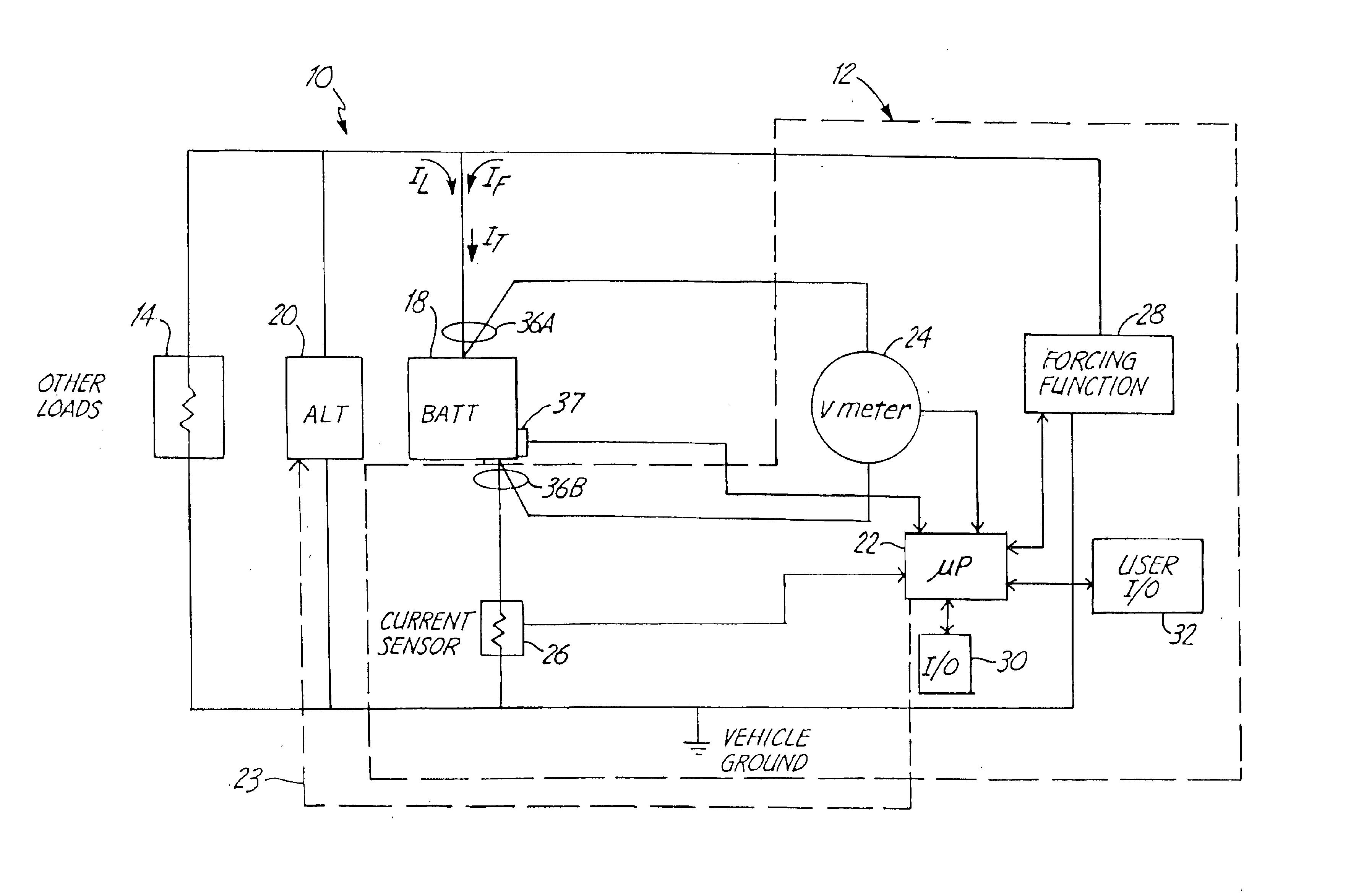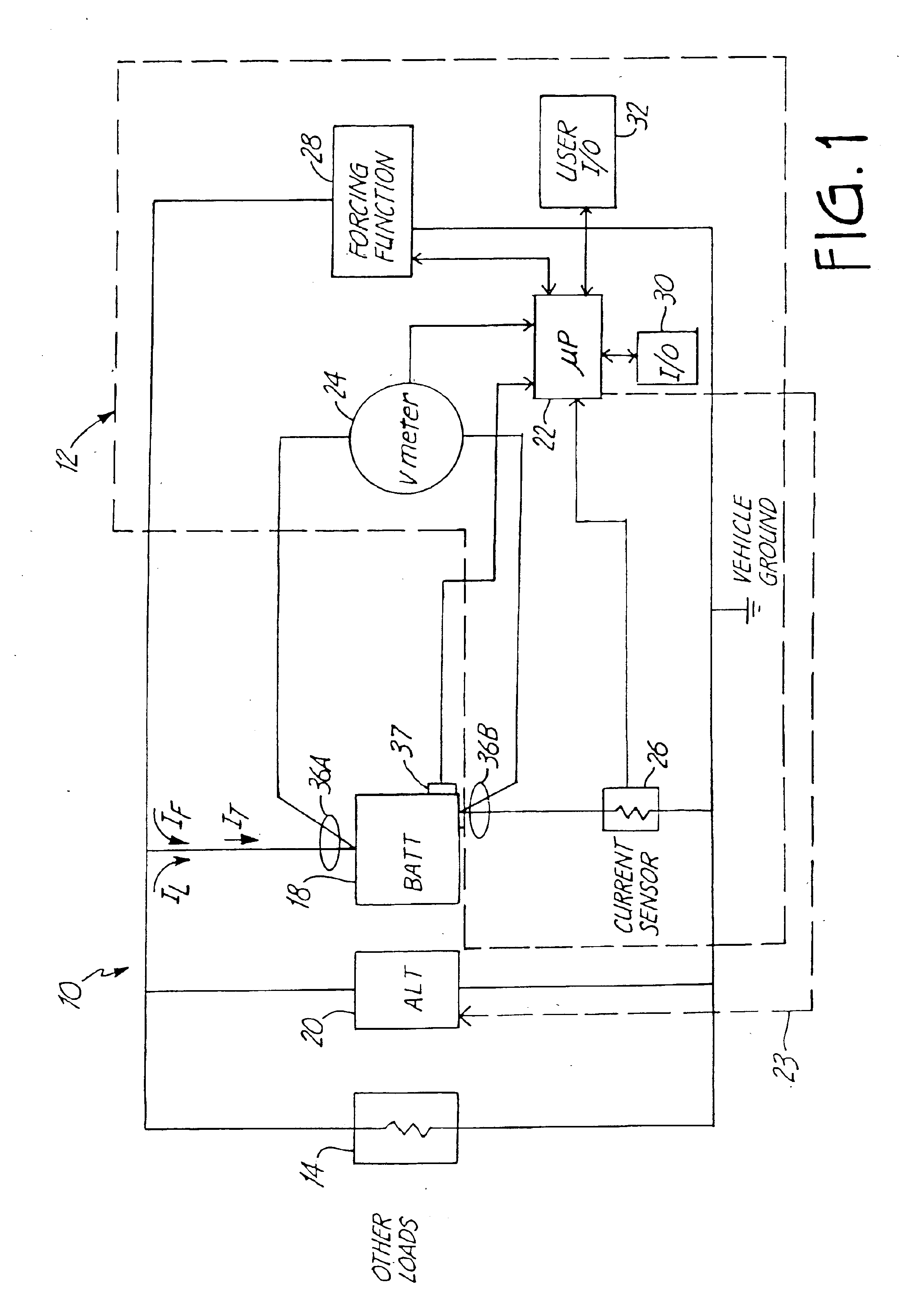In-vehicle battery monitor
a battery monitor and in-vehicle technology, applied in the field of vehicles, can solve the problems of difficult to determine, difficult to monitor the condition of the storage battery used in such vehicles, and difficult to implement techniques
- Summary
- Abstract
- Description
- Claims
- Application Information
AI Technical Summary
Problems solved by technology
Method used
Image
Examples
Embodiment Construction
The present invention offers an apparatus and method for monitoring the condition of the battery and optionally controlling charging of the battery. Such a method and apparatus can be part of a general energy management system for a vehicle.
FIG. 1 is a simplified block diagram showing an automotive vehicle 10 which includes a battery monitor 12 in accordance with one embodiment of the present invention. Vehicle 10 includes vehicle loads 14 which are shown schematically as an electrical resistance. A battery 18 is coupled to the vehicle load 14 and to an alternator 20. Alternator 20 couples to an engine of the vehicle 10 and is used to charge battery 18 and provide power to loads 14 during operation.
In general, automotive vehicles include electrical systems which can be powered when the engine of the vehicle is operating by a generator, or alternator. However, when the engine is not running, a battery in the vehicle is typically used to power the system. Thus, the standard generator ...
PUM
| Property | Measurement | Unit |
|---|---|---|
| open-circuit voltage | aaaaa | aaaaa |
| SOL | aaaaa | aaaaa |
| temperature | aaaaa | aaaaa |
Abstract
Description
Claims
Application Information
 Login to View More
Login to View More - R&D
- Intellectual Property
- Life Sciences
- Materials
- Tech Scout
- Unparalleled Data Quality
- Higher Quality Content
- 60% Fewer Hallucinations
Browse by: Latest US Patents, China's latest patents, Technical Efficacy Thesaurus, Application Domain, Technology Topic, Popular Technical Reports.
© 2025 PatSnap. All rights reserved.Legal|Privacy policy|Modern Slavery Act Transparency Statement|Sitemap|About US| Contact US: help@patsnap.com



